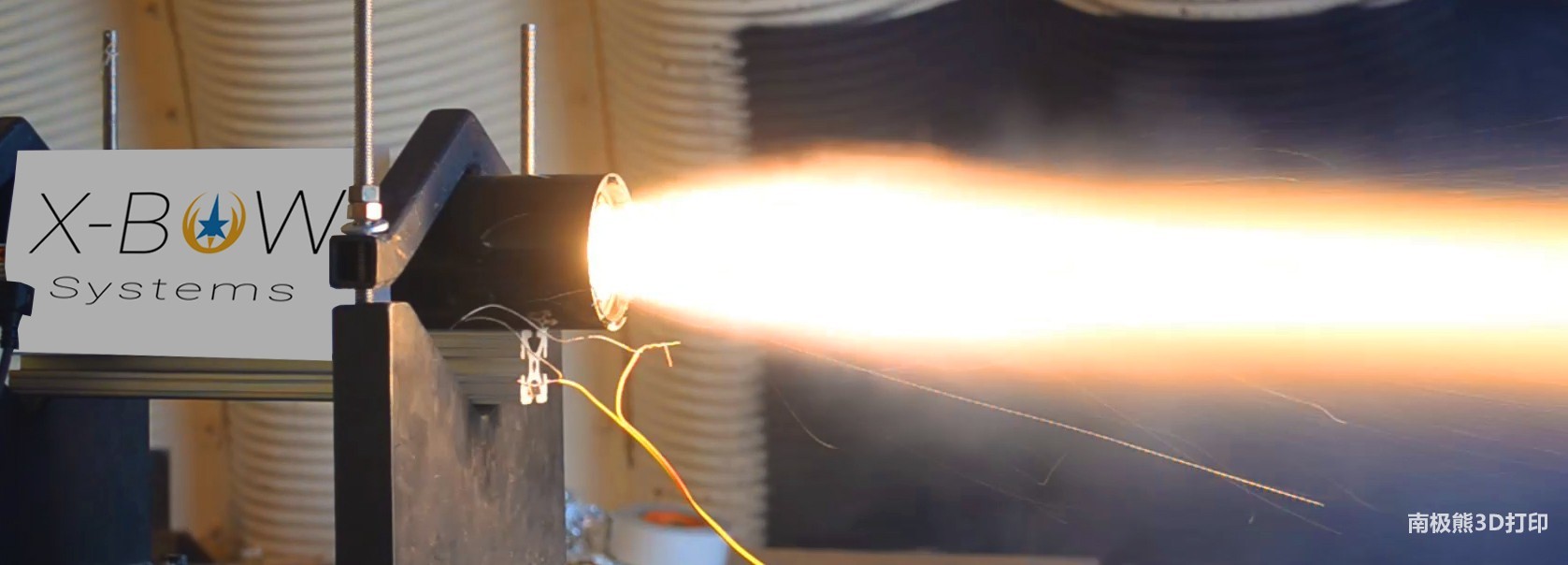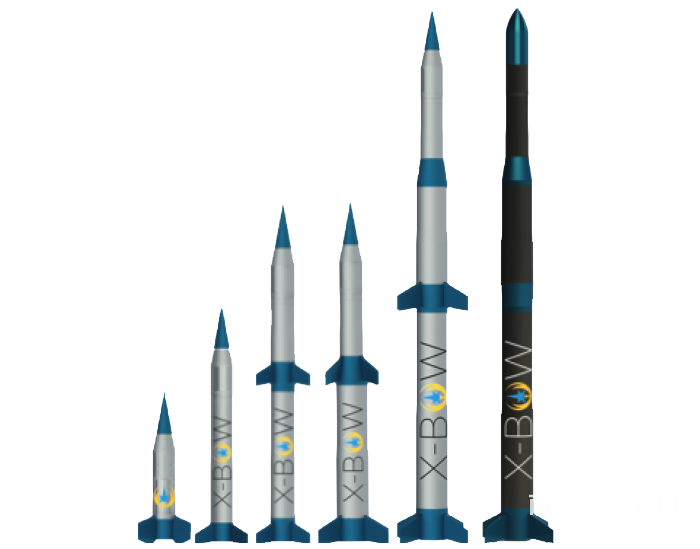March 2022, Space Technology3D printingCompany X-Bow with3D printingSolid rocket motors that stand out in space additive manufacturing.
X-Bow Launch Systems was established in 2016 and is headquartered in New Mexico. Founded in 2016, it specializes in the development of 3D printed solid fuel rocket engines and has manufactured a series of launches that can be launched in orbital (>100km) and suborbital (20-100km) airspaces. small launch vehicle.

△X-Bow tests a solid-fuel rocket motor. Photo via X-Bow.
X-Bow has multiple contracts with the U.S. government, and its current customers include the Air Force Research Lab, the Department of Space’s Innovation Unit (AFWERX), Los Alamos National Lab ), Sandia National Lab, and the Defense Research Projects Agency (DARPA).
Jason Hundley, CEO of X-Bow, said: “X-Bow is leveraging multiple unique technologies and efficient manufacturing models
aviation
aerospace
Field ‘building blocks’.Just as SpaceX revolutionized the field of rocket launches, our groundbreaking3D printing technologyIt will bring new changes to the field of solid fuel engines. Our mission is to reduce production costs by enabling the manufacture of solid fuel engines through additive manufacturing. “
solid fuel rocket motor
Solid rocket engine (Solid propellant rocket engine) is a chemical rocket engine using solid propellant, also known as solid propellant rocket engine. After the solid propellant is ignited, it burns in the combustion chamber, and the chemical energy is converted into heat energy to produce high-temperature and high-pressure combustion products. The combustion product flows through the nozzle, where it expands and accelerates, and the thermal energy is converted into kinetic energy, which is discharged from the nozzle at high speed to generate thrust. Since the 20th century, most rockets have used liquid propellants that are easy to control, but solid rocket motors are increasingly used in the military as people find that solid rockets are easier to manufacture and more reliable.
Unlike liquid or hybrid rockets, solid-fuel rockets can be stored for long periods of time without degrading the propellant, so they are highly reliable whenever they are used, without fear of fuel “failure”. Solid fuels also have disadvantages, they are not as fuel efficient and performant as liquid fuels, so solid fuel engines are not often used in medium or large launch vehicles but are often used as strapped boosters to increase payload capacity, or as low earth orbit (LEO) ) light launch vehicle.

△The rocket is launched using two solid-fuel boosters. Photo via NASA.
X-Bow’s 3D printed solid rocket motor
Since its inception, X-Bow has focused on designing and 3D printing its own solid rocket motors. X-Bow means using3D printing technologyManufactured solid rocket motors are more efficient, more economical than conventional rocket motors, and provide increased flexibility, reliability and responsiveness.
Over the past six years, X-Bow has continued to expand its product line to include 3D printed rocket engines, additively manufactured propellants, and end-to-end services for government or commercial customers. Currently X-Bow has more than 60 employees, including senior professionals from the aerospace field.
The main X-Bow
Invest
Matt Bigge, partner at Crosslink Capital, said: “The aerospace industry has long relied on traditional manufacturing techniques, lacking the use of cutting-edge technologies such as 3D printing, digital engineering and automation. These technologies fill gaps, disrupt traditional manufacturing, and shake up the emerging space economy. We have full confidence in X-Bow’s experienced team and are excited to fund it. We hope that X-Bow will revolutionize solid rocket motors. future.”

△X-Bow’s small launch vehicle. Photo via X-Bow.
3D printing powers rocket engines
In addition to X-Bow, there are many companies that use 3D printing technology to contribute in the field of rocket engines, they are:
1. China Deep Blue Aerospace
2. SpaceX
3. China Aerospace Sixth Institute Additive Manufacturing Rocket Engine Thrust Chamber Reinforcing Rib
4. NASA 3D printed copper alloy combustion chamber high-strength hydrogen-resistant alloy nozzle
5. India’s SkyrootAerospace company fully 3D printed cryogenic rocket engine
6. German Space Center 3D printed rocket injector
7. Bezos 3D printed the BE-4 rocket engine
8. The European Space Agency 3D prints a rocket engine combustion chamber
9. British Aerospace3D printerRapid Prototyping Rocket Engine
10. Australia
SPEE3D
Low-cost metal 3D printed rocket engine
11. Rocket Lab
12. Relativity Space
(responsible editor: admin)


0 Comments for “X-Bow: 3D printed solid rocket motor”